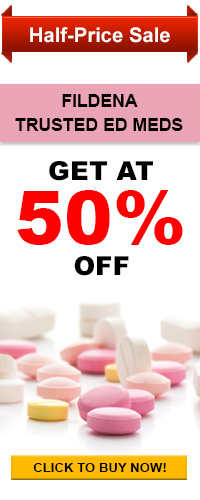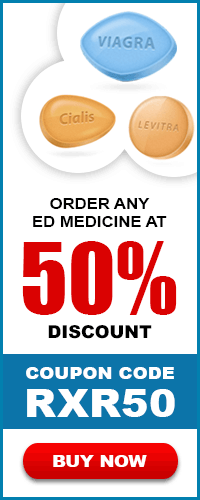Generic Name: gabapentin (GA ba PEN tin)
Brand Names: Horizant, Neurontin, Gabarone, Gralise
Forms: Oral tablet, oral capsule, oral solution, oral tablet, extended release, compounding powder.
Neurontin medicine with chemical gabapentin is a well-known anti-epileptic aid, which is also famous as an anticonvulsant. It influences mainly on the chemicals and nerves present in the body that are embroiled in the source of convulsion and some types of exterior pain. The drug is used aloof or in combination with other drugs to feast seizures which are caused due to epilepsy in adults and children who are at least 12 years old. The drug works effectively in combination with other drugs to treat partial seizures in infants who are 3 to 12 years old. It also shows utter effectiveness when used in adults to pleasure nerve pain which may be caused due to herpes virus or shingles (herpes zoster).
Drug Description:-
Neurontin is available in various forms like: capsules, tablets, and oral solution. The active ingredient in drug is gabapentin, with the chemical name 1-(amino methyl) cyclohexane acetic acid. The log of the partition coefficient (n-octanol/0.05M phosphate buffer) at pH 7.4 is –1.25. The chemical is freely soluble in water and both basic & acidic fluid solutions. The molecular formula of the main chemical in the drug is C9H17NO2 and with molecular weight 171.24. The chemical is a white to off-white crystalline in solid form with a pKa1 of 3.7 and a pKa2 of 10.7.
Each capsule contains:-
Each Neurontin drug capsule contains 100 mg, 300 mg, or 400 mg of main active ingredient gabapentin and inactive ingredients. Each tablet encompasses 600 mg or 800 mg of active ingredient. The oral solution contains 250 mg of parent component per 5 mL (50 mg per mL). The printing ink contains Shellac (E904), propylene glycol (E1520), black iron oxide (E172) and potassium hydroxide (E525).
Inactive ingredients in the capsules:
Drug has some inactive components in capsules which are: lactose, cornstarch, talc, gelatin, titanium dioxide and FD&C Blue No. 2.
The 300-mg capsule shell contains: yellow iron oxide.
The 400-mg capsule shell contains: red iron oxide, and yellow iron oxide.
Inactive ingredients in the tablets:
Drug has some inactive components in tablets which are: Poloxamer 407, copovidone, cornstarch, magnesium stearate, hydroxypropyl cellulose, talc, and candelilla wax.
Indication:-
The drugs allow administrating postherpetic neuralgia in adults. The drugs is backbone for adjunctive therapy in treating partial onset seizures, with and without inferior generalization, in adults and pediatric patients like 3 years and older who are suffering with epilepsy.
Dosage:-
Neurontin can be consumed orally with or without food. In case of breaking pill of 600 mg or 800 mg for consuming a half-tablet, the other unused half-tablet can be used as next dose. Other half-tablets should be strictly consumed within 28 days of breaking. The capsules should be swallowed as whole with plenty of plain water. If dose of the solution is reduced, discontinued, or replaced with an alternative medication, this should be done slowly over a minimum of 1 week.
Dosage for Patients with 12 years of age and above - The starting dose is 300 mg which is to be consumed three times a day. The most effective dose of the drug is 300 mg to 600 mg for intake of thrice a day. The maximum time between the doses should not exceed 12 hours in any case.
Dosage for Pediatric Patients with 3 to 11 years of age - The starting dose range is 10 mg/kg/day to 15 mg/kg/day, which are in three divided doses. The maximum time between doses should not exceed 12 hours by any chance.
Creatinine clearance (CLCr) is not easy to measure in outpatients. Further it could be calculated by the formula given below differently for males and female:-
Males: (weight in kg) x (140 – age) / (72) x serum creatinine (mg/100 mL)
Females: (0.85) x (above value)
Dosage of drug in Elderly – As elderly patients are more likely to have less renal function, dosage should be specially taken care of, and dosage should be regulated based on creatinine clearance principles in those patients.
Overdose:-
A Single oral dose is as high as 8000 mg/kg. Gestures of keen toxicity in animals included ataxia, labored breathing, ptosis, sedation, hypoactivity, or excitation. Intense oral overdose of the drug is up to 49 grams. In cases like over dosage some reactions could be seen like: double vision, slurred speech, drowsiness, lethargy and diarrhea, were observed. All patients facing these are suggested to be taken proper supportive care.
Using Guide for Drug:-
- The drug can be consumed with or without food.
- In case you break the tablet to consume half of it, the other half tablet is suggested to be consumed at your next dose.
- Measuring liquid Neurontin oral solution with dose-measuring spoon or medicine cup is must before consumption so as to avoid overdose.
- Avoid stopping of consuming the drug suddenly, even if you feel good. Suddenly stoppage of the drug may cause shooting up in level of seizures.
- Medicines is not recommended to be disposed via wastewater or normal household waste. Dispose the drug as prescribed on the guide book. Use appropriate pattern of disposal.
Storage of the Drug:-
Neurontin is strictly recommended to be kept out of reach and sight of children. The tablets and capsules are to be stored at room temperature away from light and moisture. Avoid storing the capsules above 25°C. Do not freeze the solution.
Side Effects:-
- Some people may be allergic to Neurontin and hence suffer from reactions such as difficulty in breathing, swelling of face, lips, trunk and limbs, hives, skin rash and redness or severe skin reactions such as flushing, blisters and ulcers.
- Decrease in white blood cell counts or low platelets (resulting in increased bruising, nosebleeds, sore throats), pneumonia, urinary tract or viral infections, other infections, inflammation of the pancreas (resulting in pain and tenderness in the stomach or back) or liver may causing yellowing of the skin and eyes, tiredness or fever.
Precautions:-
This drug may make you dizzy, drowsy or may also result in blurred vision. Hence, avoid driving, using machinery, or performing any activity that requires alertness or clear vision until and unless you are sure you can perform activities safely. Limit alcoholic beverages for better and safe results.
Older adults are more sensitive to the side effects of the medicine, especially swelling of hands/ankles/feet, dizziness, or loss of coordination. Whereas, children may be very sensitive to side effects of this drug, especially like mental/mood/behavior changes (such as hostility, problems concentrating, and restlessness). During pregnancy, this medication should be used only when clearly needed. Discuss the risks and benefits with your doctor.






